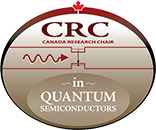Genest, J., “QUANTUM WELL INTERMIXING CONTROLLED BY EXCIMER LASER FOR PHOTONIC DEVICE INTEGRATION“, PhD in Electrical Engineering, 2008, Université de Sherbrooke, Sherbrooke. Canada. [pdf]
Integration of discrete components into a single system, such as an electronic chip,increases the system total performance; makes new functionalities appear and lowers the overallmanufacturing cost. In microelectronics, theses important improvements have been largelyresponsible for enabling the recent advancements in information and communicationtechnologies. Because the fabrication of photonic integrated circuits requires the integration ofmultiple bandgap structures within a single semiconductor chip, their integration level is far fromthe one achieved in a common microprocessor chip.
Among the potential techniques to achieve monolithic photonic integrated circuitspostgrowth quantum well intermixing in selected areas locally increases the effective band gapenergy of a semiconductor heterostructures. The thermally activated intermixing process isaccelerated by the diffusion of impurities and of point defects such as vacancies and interstitials.For this thesis work, we hypothesised that UV laser irradiation modulates point defect diffusionand generation in GaAs and InP based heterostructures and therefore controls quantum wellintermixing in specific areas.
This was verified by patterning GaAs and InP quantum well heterostructures with KrFand ArF laser pulses in various gaseous environments at different fluences and number of pulses.The intermixing was then activated during a rapid thermal annealing step.We demonstrated that in GaAs based heterostructure, excimer laser irradiation inhibitsquantum well intermixing by growing a surface stressor which prevents the diffusion of pointdefects toward the well. We highlighted the influence of physiorbed water vapour on the stressorgrowth and determined the spatial resolution of the technique. In InP based heterostructure, evenbelow ablation threshold, UV laser absorption in InP favours desorption of surface atoms whichgenerates an extra concentration of point defects. During the annealing, these point defectsparticipate to the intermixing process under the irradiated areas.

